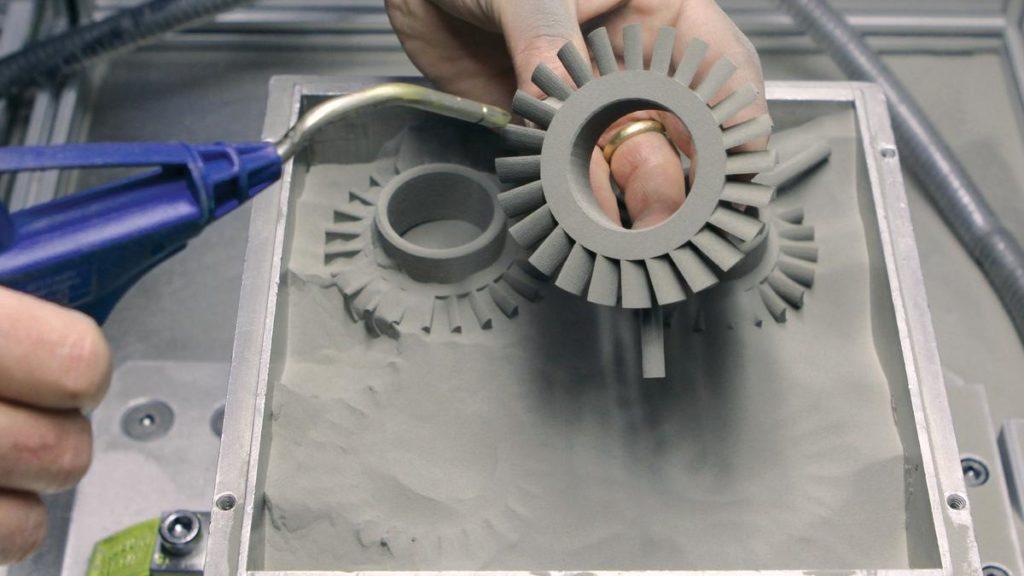3D Printing Stainless Steel Market: Regulatory Landscape and Compliance Challenges

Introduction
The global 3D printing stainless steel market is evolving rapidly, driven by technological advancements, rising industrial demand, and broader adoption across critical sectors like aerospace, medical, automotive, and energy. However, as the technology matures from prototyping to production, navigating the regulatory landscape becomes increasingly vital. Ensuring compliance with industry standards, safety protocols, and quality certification is not just a necessity—it’s a competitive advantage.
This article explores the regulatory environment, key compliance hurdles, and the growing need for standardized frameworks in the stainless steel additive manufacturing (AM) industry.
Why Regulations Matter in 3D Printing with Stainless Steel
Stainless steel components produced through additive manufacturing are often used in high-performance or safety-critical applications. This raises several regulatory considerations:
-
Material certification for strength, durability, and biocompatibility
-
Process qualification for repeatability and reliability
-
End-use certification based on industry-specific standards
Unlike traditional manufacturing, additive processes require new regulatory approaches, especially regarding part traceability, powder handling, and process control.
Key Regulatory Bodies and Standards
1. ISO (International Organization for Standardization)
-
ISO/ASTM 52900–52911 series: Terminology, testing methods, material properties, and environmental health and safety (EHS)
-
ISO 13485: For medical devices using stainless steel additive parts
2. ASTM International
-
Active in developing consensus standards for AM, including:
-
F2924: Specification for AM of stainless steel alloys
-
F3301: Guide for metal powder reuse in AM
-
3. FDA (U.S. Food and Drug Administration)
-
Governs medical devices made via 3D printing
-
Requires premarket approval (PMA) and adherence to Good Manufacturing Practices (GMP)
4. FAA (Federal Aviation Administration) & EASA (European Union Aviation Safety Agency)
-
Aerospace parts must meet stringent performance, documentation, and reliability standards
-
Certification involves extensive testing and process traceability
5. AM CoE (Additive Manufacturing Center of Excellence)
-
A partnership among ASTM, government, and academia to create a roadmap for AM certification and workforce development
Major Compliance Challenges
1. Lack of Universal Standards
-
Different industries and regions apply varied rules to AM parts
-
No unified global framework for 3D printed stainless steel components
2. Process Variability
-
Small deviations in powder quality, print parameters, or post-processing can impact part performance
-
Consistency across batches and machines is a core challenge for certification
3. Material Qualification
-
Stainless steel powders must meet specific chemical and physical standards
-
Powder reuse raises concerns over contamination and mechanical degradation
4. Documentation and Traceability
-
Regulatory bodies require complete documentation of:
-
Powder batch origin
-
Printer settings
-
Build orientation and supports
-
Post-processing treatments
-
5. Post-Processing Compliance
-
Heat treatment, machining, and surface finishing must also comply with regulatory guidelines
-
Uniformity in mechanical properties post-processing is essential for approval
Sector-Specific Compliance Scenarios
| Sector | Compliance Requirement |
|---|---|
| Aerospace | AS9100 standards, part certification under FAA/EASA, strict traceability, fatigue testing |
| Medical | FDA approval, ISO 10993 biocompatibility, ISO 13485 QMS, sterilization validation |
| Automotive | IATF 16949 compliance, crash performance validation, corrosion and durability testing |
| Energy | NORSOK standards for oil & gas, high-temperature/pressure testing, corrosion resistance |
Emerging Trends in Regulatory Compliance
A. Digital Thread and Blockchain Traceability
-
Use of digital threads to maintain part history across design, print, post-process, and deployment
-
Blockchain technologies being explored to secure digital part identity and traceability
B. In-Process Monitoring and AI for QA
-
Real-time quality assurance using machine learning and imaging systems
-
AI-driven models help predict part quality and flag non-compliant builds instantly
C. Third-Party Certification Platforms
-
Independent testing labs and certifying bodies are stepping in to fill the standards gap
-
Services include powder characterization, print validation, and metallurgy assessments
Collaborative Efforts and Global Initiatives
Efforts are underway to create harmonized standards and certifications:
-
America Makes and NIST (U.S.): Researching process repeatability and standards
-
VDI and DIN (Germany): Publishing guidelines on design and material requirements
-
ISO/ASTM Joint Committees: Coordinating global standardization for metal AM
These initiatives aim to streamline regulatory approvals and encourage cross-border market expansion.
Future Outlook
As 3D printing with stainless steel matures, regulatory frameworks will continue to evolve in response to:
-
New material compositions and hybrid alloys
-
Increased part complexity enabled by generative design
-
Higher production volumes transitioning from prototyping to end-use parts
Standardized compliance models will be crucial to maintaining part integrity, safety, and market trust. The integration of AI, digital certification, and closed-loop systems will be pivotal in meeting future regulatory demands.
Conclusion
Navigating the regulatory landscape of the 3D printing stainless steel market is one of the most critical steps toward mass adoption. As industries seek to unlock the full potential of additive manufacturing, they must also address the complex web of compliance, certification, and quality assurance requirements.
Material innovators, manufacturers, and end-users alike must align with evolving global standards and invest in regulatory-readiness to stay competitive in a market where quality is non-negotiable. With the right strategies, regulatory compliance can become not just a barrier—but a strategic enabler of growth and trust in the next industrial era.
- Art
- Causes
- Crafts
- Dance
- Drinks
- Film
- Fitness
- Food
- Games
- Gardening
- Health
- Home
- Literature
- Music
- Networking
- Other
- Party
- Religion
- Shopping
- Sports
- Theater
- Wellness


